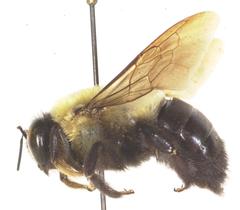University of Georgia, Athens
 UGCA195859 Xylocopa virginica male |
| Xylocopa |
 UGCA195859 Xylocopa virginica male |
| Discover Life | All Living Things | Insecta | Hymenoptera | Apoidea | Apidae | Xylocopa |
| Index |
| Index |
|
| Index |
| Index |
| Index |
| Discover Life | All Living Things | Insecta | Hymenoptera | Apoidea | Apidae | Xylocopa |